1996 Toyota T100 Tires, Repair & Service
Get Started
Complete Auto Care for Your 1996 Toyota T100
-
TIRES FOR YOUR 1996 Toyota T100 View Tire Info GET TIRE PRICING
-
REPAIR FOR YOUR 1996 Toyota T100 View Repair Info SCHEDULE REPAIR
-
MAINTENANCE FOR YOUR 1996 Toyota T100 View Maintenance Info SCHEDULE MAINTENANCE
-
OFFERS FOR YOUR 1996 Toyota T100 Limited Time Tire Offers VIEW ALL COUPONS
1996 Toyota T100 Tires
Recommended Tires | Tire Information
1996 Toyota T100 Tires Sizes, Speed Ratings, and Inflation
Not sure about your 1996 Toyota T100 tire size? Use the following chart to find information on tire size, speed rating, and inflation.
| Trim Level | Speed Rating | Inflation in PSI F/R | Tire Size |
|---|---|---|---|
| 1996 Toyota T100 SR5* | None | 29 PSI/32 PSI | 31x10.50R15LT/C |
| 1996 Toyota T100 SR5* | S | 35 PSI/35 PSI | P235/75R15 |
| 1996 Toyota T100 SR5* | S | 35 PSI/35 PSI | P215/75R15 |
| 1996 Toyota T100 SR5* | S | 29 PSI/32 PSI | P235/75R15 |
| 1996 Toyota T100 Base* | S | 29 PSI/32 PSI | P235/75R15 |
| 1996 Toyota T100 Base* | S | 35 PSI/35 PSI | P235/75R15 |
| 1996 Toyota T100 Base* | S | 35 PSI/35 PSI | P215/75R15 |
| 1996 Toyota T100 Base* | None | 29 PSI/32 PSI | 31x10.50R15LT/C |
| 1996 Toyota T100 DLX* | S | 29 PSI/32 PSI | P235/75R15 |
| 1996 Toyota T100 DLX* | S | 35 PSI/35 PSI | P215/75R15 |
| 1996 Toyota T100 DLX* | None | 29 PSI/32 PSI | 31x10.50R15LT/C |
| 1996 Toyota T100 DLX* | S | 35 PSI/35 PSI | P235/75R15 |
|
1996 Toyota T100 SR5* Speed Rating: None Inflation F/R: 29 PSI/32 PSI |
|
1996 Toyota T100 SR5* Speed Rating: S Inflation F/R: 35 PSI/35 PSI |
|
1996 Toyota T100 SR5* Speed Rating: S Inflation F/R: 35 PSI/35 PSI |
|
1996 Toyota T100 SR5* Speed Rating: S Inflation F/R: 29 PSI/32 PSI |
|
1996 Toyota T100 Base* Speed Rating: S Inflation F/R: 29 PSI/32 PSI |
|
1996 Toyota T100 Base* Speed Rating: S Inflation F/R: 35 PSI/35 PSI |
|
1996 Toyota T100 Base* Speed Rating: S Inflation F/R: 35 PSI/35 PSI |
|
1996 Toyota T100 Base* Speed Rating: None Inflation F/R: 29 PSI/32 PSI |
|
1996 Toyota T100 DLX* Speed Rating: S Inflation F/R: 29 PSI/32 PSI |
|
1996 Toyota T100 DLX* Speed Rating: S Inflation F/R: 35 PSI/35 PSI |
|
1996 Toyota T100 DLX* Speed Rating: None Inflation F/R: 29 PSI/32 PSI |
|
1996 Toyota T100 DLX* Speed Rating: S Inflation F/R: 35 PSI/35 PSI |
* Note: these models have different tire sizes depending on vehicle options.
Recommended Tires for Your 1996 Toyota T100
What tires are best for a 1996 Toyota T100? Check out the following tire brands and types.
 Blizzak DM-V2
Blizzak DM-V2
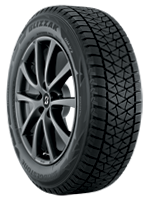
- No warranty
- Winter
- Winter
 Destination LE3
Destination LE3
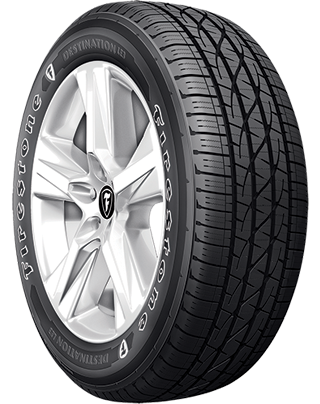
- No warranty
- All-Season
- Light Truck Tires
 Winterforce 2 UV
Winterforce 2 UV
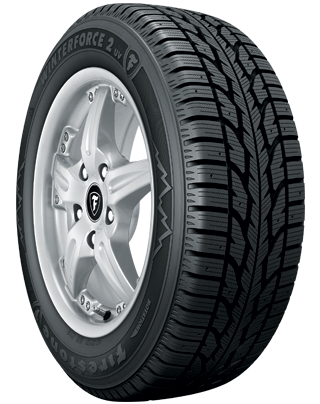
- No warranty
- Winter
- Winter
 Destination A/T2
Destination A/T2
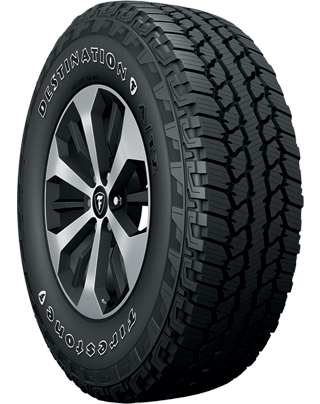
- Gold Pledge Limited Warranty
- All-Season
- Light Truck Tires
 Destination M/T2
Destination M/T2
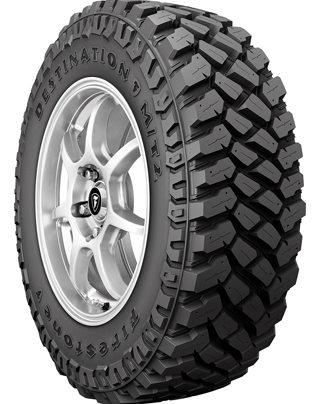
- No warranty
- All-Season
- Light Truck Tires
 Destination X/T
Destination X/T
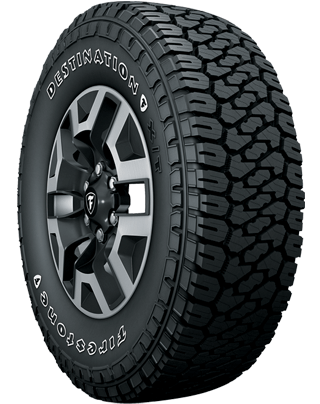
- Gold Pledge Limited Warranty
- All-Season
- Light Truck Tires
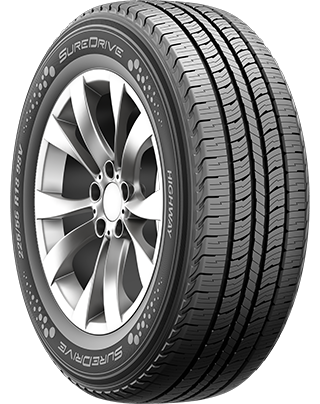
- No warranty
- All-Season
- Light Truck Tires
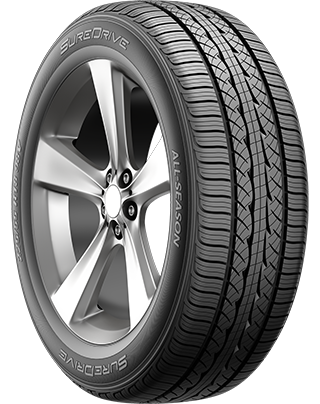
- No warranty
- All-Season
- Passenger Tires
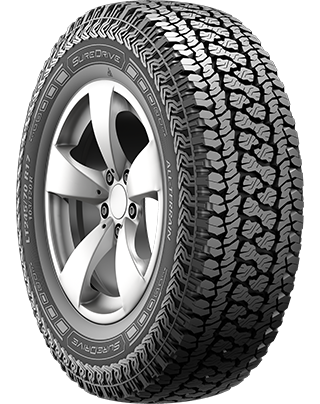
- No warranty
- All-Season
- Light Truck Tires
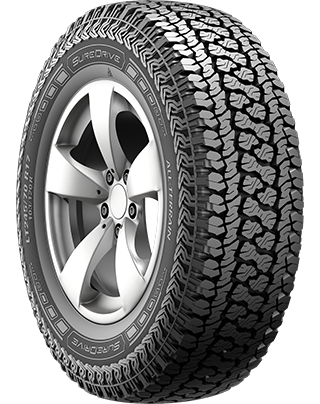
- No warranty
- All-Season
- Light Truck Tires
 Extensa A/S II
Extensa A/S II
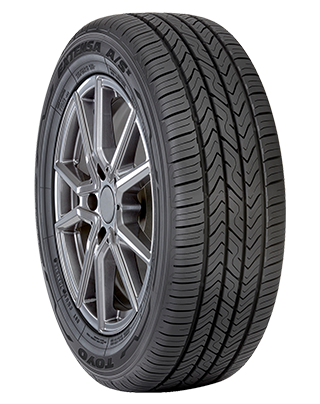
- No warranty
- All-Season
- Passenger Tires
 OPEN COUNTRY A/T III
OPEN COUNTRY A/T III
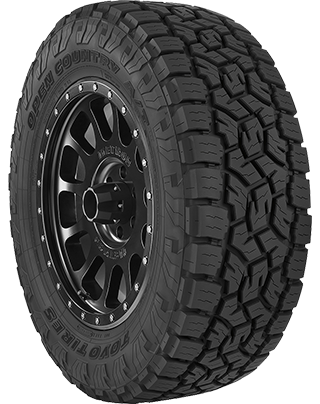
- No warranty
- All-Season
- Light Truck Tires
 OPEN COUNTRY HTII
OPEN COUNTRY HTII
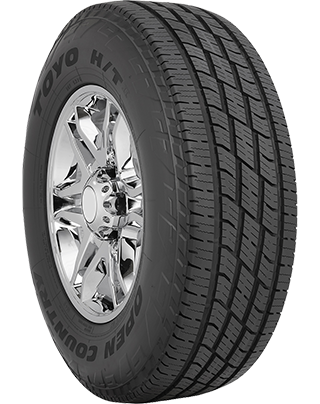
- No warranty
- All-Season
- Light Truck Tires
 OPEN COUNTRY M/T
OPEN COUNTRY M/T
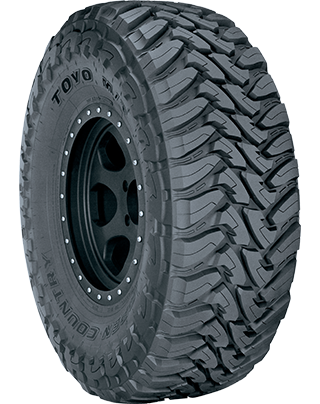
- No warranty
- All-Season
- Light Truck Tires
 OPEN COUNTRY R/T
OPEN COUNTRY R/T
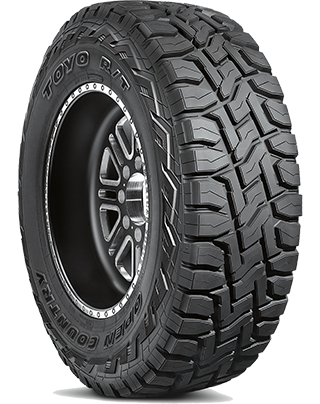
- No warranty
- All-Season
- Light Truck Tires
About 1996 Toyota T100 Tires
Apart from finding the right tire size, you also want to think about a couple of other things when getting new Toyota T100 tires like how and where you drive, and how much you want to spend. Think about where you live (countryside vs. city vs. mountains) and the kind of unexpected weather you're likely to experience when evaluating your driving conditions. It's not uncommon for drivers in states that experience all four seasons to buy more than one set of tires. one for summer and one for winter. Other drivers prefer the convenience of all-season tires. They make one trip to the tire shop and they're pretty much ready for rain, light snow, or sun!
Next, consider your driving style. If you're a big off-roading fan who forges paths where others can't, you have very different needs than a long-distance commuter who sticks to the highway. Browse Toyota T100 tires online or come to your nearby Firestone Complete Auto Care for help selecting the tire that's right for you.
Installing Toyota T100 Tires
Firestone Complete Auto Care installs more tires on more cars than most other companies. We're your one-stop shop for tire installation, rotation, and ongoing maintenance! Shop 1996 Toyota T100 tires online and schedule an installation appointment.
1996 Toyota T100 Tire Q&A
-
Why does Toyota tire inflation matter? A small decrease in tire pressure can have a big impact on your driving. Maintaining proper tire pressure can help improve braking time, increase fuel economy, and boost tire lifespan.
-
Why are there numbers on the side of my Toyota T100 tires? The numbers on your tire sidewall give you information about tire speed rating, traction, treadwear, tire size, and load carrying capacity. Chat with a tire technician to learn how to read the numbers on your Toyota tires!
-
Is there an easy way to check Toyota tire tread depth? Stay on top of your tire tread depth to help avoid a dangerous drive. You can check tread depth with a penny. Hold the penny so that Abraham Lincoln is facing you, then place your penny into a tread groove upside down. If you can see the top of Abe’s head, your tread is shallow and it might be time for new Toyota T100 tires. Grab a penny. Hold the so that Abe Lincon's head is facing you and his hair is pointing toward the ground. Then, place the penny into a tread groove. If you can see the top of Abe’s head, your tread is shallow and it might be time for new Toyota T100 tires.
1996 Toyota T100 Repair
Want more details? Choose a service below to read more about Toyota T100 repairs at Firestone Complete Auto Care.
1996 Toyota T100 Repair Information
No driver looks forward to car repairs. But at Firestone Complete Auto Care, we strive to give you the excellent repair experience you deserve. When it’s time for 1996 Toyota T100 repair services, head to your nearest Firestone location and rest easy knowing that your T100 is in capable hands. We’ll start by assessing what repairs may be needed, and we’ll provide you with a detailed explanation of what we recommend. We value your trust, so we recommend only the repairs we think are necessary for your safety on the road.
What Will Toyota T100 Repairs Cost?
The cost to repair your 1996 Toyota T100 depends on the type of repair, the cost of any replacement parts, the amount of labor necessary to get the job done, and the state you live in. No matter what state you’re in, be sure to look through our offers and online coupons for repairs.
A few different aspects can influence repair costs for your 1996 Toyota T100, like
Questions About 1996 Toyota T100 Auto Repairs
-
Can scheduled maintenance help me avoid repairs? Don’t neglect scheduled maintenance. Sure, you could skip out on a few recommended maintenance services, but you may pay the price later. Bring your vehicle to Firestone Complete Auto Care at recommended service intervals to address minor issues before they get out of hand and keep your car running newer, longer.
-
Should I bring my Toyota in even if I can't pinpoint the problem? You know your vehicle. You also know when something feels 'off' with your vehicle. Pay attention when things don't run like they used to and stop by for a Courtesy Check when you notice an unusual sign, smell, or sensation. We might be able to help you prevent Toyota T100 repairs!
-
Are the repairs you recommend for my Toyota actually needed? Trust is more than just a saying on the wall. It’s a window underneath it. That’s why we won’t recommend services or repairs for your 1996 Toyota T100 unless we think they’re vital to your safety on the road.
Brake Repair for Your 1996 Toyota T100
Your Toyota T100 may be powered by a strong engine. But if you can’t stop it, it’s as good as scrap metal. If you notice your brakes are squeaking or not working well, don’t wait! Unresponsive brakes make it tough to give the road your best. What's more, waiting for things to figure themselves out can result in more damage to your brakes and your wallet. Go to your local Firestone Complete Auto Care for 1996 Toyota T100 brake repairs. Our brake repair services include pad/shoe replacement, brake rotor/drum machining, brake fluid exchange, and brake caliper and wheel cylinder service.
Answers to Your T100 Brakes Questions
-
Why does my T100 shake when I brake? Faulty brake calipers, worn brake pads or rotors, loose or worn suspension parts, and warped rotors can cause your T100 to shake during braking. If you’re experiencing odd brake behavior, schedule a free brake inspection at a nearby Firestone Complete Auto Care.
-
How long can I expect my T100 brake pads to last? Brake pads typically last about 30,000 to 40,000 miles. However, driving conditions can affect this range. Sticking to highway driving and braking smoothly can help extend the life of your brake pads, while towing heavy loads or frequently riding your brakes can shorten it.
-
Can brake fluid leak when my T100 is off? Because your T100 brake system is a closed hydraulic system, it should not leak brake fluid. However, if components in your brake system have worn out or been damaged, it might cause brake fluid to leak.
When to Get Toyota T100 Drivetrain Repairs
Drivetrains for front, rear, and all-wheel-drive and 4WD vehicles are not all the same. You don't want to go to any random shop for drivetrain repair. You want to go to Firestone Complete Auto Care. We can fix many 1996 Toyota T100 drivetrain components Your Toyota T100 may need driveshaft attention if you feel vibration as your vehicle accelerates, clunks when shifting, heavy vibrations in your floorboards, or resistance when turning.
1996 Toyota T100 Drivetrain Questions
-
How do I know if my Toyota drivetrain is damaged? Hear noises toward the back of your Toyota T100? See fluid leaking? Having issues turning? These could all be signs of drivetrain damage you don't want to ignore. Take action quickly to catch repairs or replacements before something more severe happens.
-
What triggers the malfunction indicator light (MIL) in a T100? If your T100 has its malfunction warning light (more commonly called the check engine light) illuminated, it could indicate engine troubles, problems with the transmission, electrical issues, malfunctioning sensors, connector problems, or misfire issues.
-
How worried should I be about a drivetrain malfunction in my T100? If you experience a drivetrain malfunction in your T100, it is important to have it inspected by a professional mechanic as soon as possible to identify the underlying cause and perform the necessary repairs. Driving with a malfunctioning drivetrain can be dangerous and cause further damage to your car.
1996 Toyota T100 Wheel Alignment
With an alignment service, adjustments are made to your Toyota T100’s suspension system, the connection between the vehicle and the wheels. During the service, the individual angles of your tires are adjusted so that they come into contact with the road in just the right way — the way Toyota intended them to. Bring your 1996 Toyota T100 in for a wheel alignment and we'll start with an alignment check. If needed, we'll adjust your wheel alignment angles to match Toyota recommendations.
Toyota T100 Alignment Questions
-
What can knock my Toyota T100 out of alignment? Hitting a pothole or curb can alter your wheel alignment. So can general wear and tear over time.
-
How often does your T100 need a wheel alignment? Typically, your alignment should be checked every 6,000 miles or 6 months, whichever comes first. Double-check your T100 owner’s manual for Toyota's exact recommended schedule.
-
Do you need to get your T100 wheels aligned when you get new tires? It’s likely not a requirement to get an alignment when you install new tires on your T100, but it's a smart idea to do so anyway. An alignment can help ensure even tire wear, smooth handling, and better fuel efficiency.
1996 Toyota T100 Engine Repair
When your Toyota T100 engine needs repairs, our expert techs will let you know what needs to be done and why before they get started. We make recommendations, but you make the final decision. If a repair can wait, we'll let you know. But if immediate repairs are necessary for your safety, we’ll make sure that's clear, too. We want to provide you with the information you need to make an informed engine repair decision. By choosing Firestone Complete Auto Care for T100 engine repairs and you can feel confident knowing that we use Toyota-approved parts and components like the timing chain or belt, valve guide seal, ignition coil, or another part.
Engine Q&A 1996 Toyota T100
-
Why does the check engine light in my T100 turn on when I start my car? Generally, your check engine light turning on upon ignition is not a bad thing. It’s just your T100 firing up its circuits. The light should turn off in a bit, but come see us if it doesn't.
-
Why does my Toyota engine sound different? Unusual noises can signal a problem with your Toyota T100 engine. Tapping or knocking could mean you're low on oil. Whistling could mean a belt is misaligned or there's an intake leak. Squealing can indicate a loose fan belt, and grinding might be coming from the brakes, not the engine.
-
Are you unknowingly damaging your Toyota T100 engine? Some driving habits are not so great for your engine. These include driving on a near-empty gas tank, flooring the gas pedal while the car is in Park, or accelerating too quickly, too soon. Protect your engine’s performance and efficiency by distancing yourself from these habits.
Get Your Toyota T100 Tire Repaired
Firestone Complete Auto Care is here for you when your 1996 Toyota T100 needs flat tire repair or inspection. Our tire technicians can determine whether it's safe to plug and patch the tire, or whether it needs to be replaced. We'll start by evaluating the state of wear, the location of damage, type of damage, and the size of the damage.
If your 1996 Toyota T100 tire puncture can be repaired, we'll follow three basic steps to repair it: (1) Remove the tire from the wheel for inspection and repair, (2) use a filler to close up the puncture (this is to keep moisture from getting in), and (3) seal the inner liner with a repair unit to prevent air loss.
Frequently Asked Toyota T100 Tire Repair Questions
-
How soon should I have my flat tire repaired? A flat tire that’s not addressed can take a terrible toll on the rest of your car. Until you have it repaired or replaced, drive your T100 as little as possible to reduce your risk of damage to the wheels and alignment – or further damage to that already struggling tire!
-
Can I use an emergency/temporary sealant to fix my Toyota's flat tire? A temporary sealant may be able to help you get to a repair location safely. But temporary or emergency sealants could possibly damage TPMS sensors, and in some cases may even void the warranty on your Bridgestone or Firestone tires. If your tire needs extensive repair, sealant can add time and labor costs to the process.
-
What can cause T100 tires to keep losing air? Possible reasons for your T100 tires continuously losing air include a leaking valve steam, wheel damage, and a puncture or hole in the rubber.
1996 Toyota T100 Maintenance
When it comes to your Toyota T100, how you treat your car makes all the difference in its performance. With proactive maintenance, your T100 could be on the road well past the 200,000 mile mark.
1996 Toyota T100 Maintenance Information
Instead of waiting for an issue to arise with your T100, you can stay ahead of problems before they even begin. Rely on the recommended maintenance schedule that’s been created just for your 1996 Toyota T100! Toyota knows your vehicle inside and out (they made it, after all!), so they’ve designed this schedule with your car’s unique needs in mind. Driving conditions, climate variations, and other variables can affect which scheduled maintenance services you’ll need; however, there’s a good chance that your vehicle’s recommended maintenance services will include fluid exchanges, filter changes, new brake pads, oil changes, and tire rotations. Keeping up with routine service appointments is a great way to keep your T100 running for longer, decrease your risk of dangerous malfunctions on the road, and maybe even save you the headache of dealing with common 1996 Toyota T100 problems in the future.
Learn About Vital Maintenance Needs for Your Toyota T100
Come to Firestone Complete Auto Care for manufacturer-recommended routine maintenance on your 1996 Toyota T100 and our technicians will jump right in with a Courtesy Check. The Courtesy Check helps us see what we’re working with under the hood, and allows us to alert you to any potential problems before they worsen. Every Courtesy Check will include a visual inspection of your T100. We’ll check your head and tail lights, fluid levels, filters, tires (and their alignment!), and windshield wiper blades. We’ll also perform a free battery check to determine your battery’s charge level.
Firestone Complete Auto Care is your spot for 1996 Toyota T100 maintenance. We can help you keep your vehicle (and your life!) running smoothly. Many of our locations have weekend and evening hours for your convenience.
Questions About 1996 Toyota T100 Maintenance
-
What should I do after hitting a pothole in my Toyota T100? Check your car for pothole damage! If you’ve recently hit a pothole (or even if you don’t remember hitting one… they can be sneaky!) check your tire treads, tire sidewalls, and wheels for damage. Potholes can also knock your car out of alignment, so have your alignment checked if you suspect you’ve driven over a rough patch of road lately.
-
When does my Toyota T100 need high mileage oil? Do you have more than 75,000 miles on your Toyota T100? If so, request to switch to high mileage oil at your next oil change. This type of oil is specially formulated to keep aging engine parts in the best possible condition.
-
Can Toyota dashboard warning lights wait? Because there might be a problem under the hood. Those warning lights are there for a reason! As soon as you notice that one’s illuminated, take your Toyota T100 to Firestone Complete Auto Care so you can address any small problems long before they worsen.
1996 Toyota T100 Battery Replacement & Size
Researching battery replacements for your Toyota T100?
| Battery | Engine | Warranty | Cold Cranking Amps | |
|---|---|---|---|---|
| 24F-3 | V6/3.4L | Replacement 24 months | Performance months | 650 |
| 24F-6 | V6/3.4L | Replacement 36 months | Performance months | 750 |
| 24F-RP | V6/3.4L | Replacement 48 months | Performance months | 750 |
| 24F-3 | L4/2.7L | Replacement 24 months | Performance months | 650 |
| 24F-6 | L4/2.7L | Replacement 36 months | Performance months | 750 |
| 24F-RP | L4/2.7L | Replacement 48 months | Performance months | 750 |
1996 Toyota T100 Car Batteries
Generally, car batteries last from three to five years. Check your battery regularly and replace it as needed so it doesn’t leave you and your Toyota T100 stranded. Look out for symptoms of a faulty car battery. A slow engine crank, an illuminated battery or check engine light, bloated battery case, corroded battery terminals, or faded headlights may all indicate that your battery is on its last leg.
Or, you can get a complimentary battery check at your nearest Firestone Complete Auto Care. Stop by for a free battery test and, if necessary, a battery replacement to help keep your 1996 Toyota T100 running! Car batteries are one of our many specialties! Our technicians are well-acquainted with Toyota’s service specs for T100 car batteries’ reserve capacities and cold cranking amps. Get help identifying the type and size of battery that fits your car perfectly, and schedule a fast car battery replacement at your earliest convenience.
Top Toyota T100Car Battery Questions
-
Why won't my Toyota T100 battery stay charged? A battery is in its final hour when it will no longer hold a charge. The battery may be too old. Or, you may have been leaving your car doors ajar and the cabin light at night. Stop by for a complimentary battery check at your favorite Firestone Complete Auto Care and get a handle on your car battery’s health.
-
How long can I expect my car battery to last? The typical 12-volt car battery may last three to five years, depending on the type of battery, the driving conditions, and how well the battery is maintained.
-
Why is there white, flaky stuff around my T100’s battery post? If you notice white, crusty stuff around the battery terminals of your T100, it's likely corrosion. A chemical reaction between battery acid and the air can create a white, powdery substance that builds up over time on the terminals. This buildup can interfere with the electrical connection between the battery and your T100’s electrical system, potentially leading to poor performance, difficulty starting, and other issues.
Oil Changes for 1996 Toyota T100
Toyota recommends having your 1996 Toyota T100’s motor oil changed at regular intervals. Your T100 may need an oil change right away if your check engine/oil change light is on, you hear knock knock knock coming from the engine, sense an oil smell in the cabin, or notice excess vehicle exhaust. You may also need an oil change more frequently than Toyota recommends if you haul heavy loads, drive in dusty areas, adventure off-road, or drive at low speeds for long distances.
Whether it’s synthetic, conventional, or a blend of both — your local Firestone Complete Auto Care has the right oil for your Toyota T100. Consult Toyota's recommendations to select the right 1996 T100 oil and talk with a teammate to learn more about our oil options: Quaker State® Advanced Durability™ conventional oil, Pennzoil® High Mileage Vehicle® motor oil, Pennzoil Platinum® Full Synthetic motor oil with PurePlus™ Technology, and Shell Rotella® heavy-duty engine oil. In an oil change service, an auto technician will change your T100’s oil, replace and recycle your used oil and filter, inspect all of your other filters, top-off essential fluids, and perform a courtesy inspection on your entire vehicle. Get professional engine care by making an oil change appointment for your T100 today.
1996 Toyota T100 Oil Change Questions
-
What can cause the oil light on my Toyota T100 to illuminate? The oil change light in your Toyota T100 could be triggered by an overdue oil change. However, if the oil pressure light is on, you may be dealing with low engine oil, a failing oil pump, a clogged oil filter, or a malfunctioning oil pressure sensor.
-
Can I change my Toyota oil on my own? First off, changing your own oil isn’t as easy as you’d think. You’ll have to buy special tools and figure out a way to recycle the old oil properly. Getting a professional oil change reduces the risk of something going wrong during the service, but also helps your car perform down the road.
-
Why is my Toyota exhaust smoke gray or blue? There could be an oil leak and your engine is burning oil. Time to have a qualified technician check things out. The leak could be caused by several issues like leaking valve seals, damaged piston rings, or worn cylinder walls.
Engine Tune-Up Service for Your 1996 Toyota T100
Routine engine tune-ups can bring power back to your T100. Your local Firestone Complete Auto Care offers a range of engine tune-up services for your 1996 Toyota T100. The standard Firestone Tune-Up is one service option. It includes a complete visual inspection of engine components, installation of new spark plugs, and a lifetime warranty on parts*. The second service focuses on your T100's filters, specifically replacing the air filter and fuel filter. The third tune-up option is a fuel system cleaning service, which is a three-step process that removes varnish, dirt, and carbon deposits on your T100's fuel injectors, throttle body, and throttle plate. This goes a long way in boosting your fuel system’s overall performance. Here’s something to remember when choosing services: the mileage and service history of your T100 can determine what kind of service it needs. Talk to a technician about your driving style, mileage, and service history to learn more about your vehicle's specific needs.
*Talk to a Firestone Complete Auto Care teammate for full terms and conditions on warranties.
Questions About 1996 Toyota T100 Engine Tune-Ups
-
What happens if my Toyota T100 spark plugs fail? Replace spark plugs on time or about every 30,000 miles or so. Without the spark of electricity created by spark plugs, your engine doesn’t have the combustion it needs to start — which could leave you stranded on the road. Always replace your spark plugs on time based on Toyota’s recommendations.
-
What do I do if I see a pool of liquid under my Toyota T100? Don't ignore puddles of fluid under your Toyota T100. It could signal a coolant leak, brake fluid leak, or an oil leak. Let any one of these leaks linger and it could cause engine damage.
-
How often do Toyota T100 fuel injectors need to be cleaned? Factors like fuel type and driving conditions can affect how frequently you need to clean your T100 fuel injectors. Some manufacturers recommend a fuel system cleaning as part of routine maintenance, or as needed if your vehicle is showing signs of poor fuel system performance.
1996 T100 Toyota Steering & Suspension Services
During the first few years you had your 1996 Toyota T100, you and your passengers probably enjoyed a ride that was smooth and balanced. But these days, things are starting to feel a bit rough. Maybe your T100 jolts, sways to one side, or makes a weird sound when you drive over a speed bump or turn. The first sign of trouble is the best time to bring your 1996 Toyota T100 in for steering and suspension services. We’ll get to the source of your car problems and, if your car needs steering and suspension repairs, we’ll go over the services you need and how much they will cost before we do any work.
1996 T100 Steering & Suspension Q&A
-
Why is my Toyota T100 bouncing so much? Damaged struts or shocks can't dampen road bumps properly, causing your vehicle to feel like a trampoline after each dip or bump.
-
Why does my T100 front end dip forward when I brake? The forward dip in the front end of your T100 when you brake is caused by the weight and momentum transferring to the front wheels. If your suspension system is in bad shape, it can fail to distribute this force, leading your front end to dip further downward.
-
Does tire pressure and tread depth impact my Toyota's suspension? Keeping your tires properly inflated can help reduce strain on the suspension, and also help you notice when you need new tires. A tire that doesn't have an adequate amount of tread can't grip the road or function as well as the manufacturer intended.
Convenient & Local 1996 Toyota T100 A/C Service
Our technicians will work to solve your 1996 Toyota T100 A/C problems to the best of their ability. During an A/C performance check, we'll determine the condition of your 1996 Toyota T100 A/C system to evaluate what repairs are necessary (if any). This check includes a visual inspection, performance test, and pressure and leak test.
While your 1996 Toyota T100’s air conditioner is being serviced, we’ll also do an A/C evacuation and recharge. To do this, one of our technicians will remove the refrigerant in your A/C system (if there is even any left to remove). Next, they will evacuate the system according to Toyota's recommendations. The A/C system is recharged with new refrigerant.
1996 Toyota T100 A/C System FAQs
-
What’s making my T100 A/C put out warm air? If your car’s air conditioning isn’t blowing cold air at all (or it tries, then turns warm), you could have a clogged expansion valve, a faulty compressor clutch, a leak, or a malfunctioning fuse in the system.
-
What causes A/C system leaks? Over the years, the rubber seals and gaskets in your T100’s A/C system naturally degrade. Moisture can get into the system and cause a malfunction, or parts can simply wear out so that your system no longer seals properly.
-
What is causing my T100’s A/C to only work when the car is in motion? If your A/C only works when the vehicle is moving, there could be a problem with part of your T100’s A/C or electrical system. Potential issues include low coolant or a faulty cooling fan.
1996 Toyota T100 Transmission Service & Repairs
The transmission delivers power from the engine to the wheels so that you can drive on your terms. Because of the transmission’s responsibility to translate the right dose of power into the right amount of speed, even the smallest transmission problems should be addressed right away. 1996 Toyota T100 transmission issues could include shifting delays, jumping or grinding during acceleration, the car shaking on the road, or a burning smell or whistling sounds coming from under the hood. Let Toyota T100 transmission problems linger and you could see your fuel economy decrease or discover that your T100’s not even driveable. Our technicians know how to service your 1996 T100 up to Toyota-recommended standards. As soon as you suspect something’s wrong with your T100’s transmission, book an appointment at your local Firestone Complete Auto Care to help keep your Toyota running for miles and miles.
Questions About 1996 Toyota T100’s Transmission
-
How often does my T100 transmission fluid need to be checked? Maintaining your Toyota T100 transmission fluid is one of the best ways to maintain your transmission's health. A general rule of thumb is to have your transmission fluid checked and changed about every 30,000 to 60,000 miles, but that timeline can change if you're hard on your Toyota. Leaks or low transmission fluid are easy to spot and affordable to repair.
-
Is it possible for transmission fluid to leak from my Toyota T100? Yes, your Toyota T100 can develop a transmission fluid leak. As your T100 ages, parts of the transmission system might wear out or break down, leading to a leak and possible transmission issues. Common causes of transmission fluid leaks include worn seals, a damaged transmission housing, a loose or cracked transmission pan, an overfilled transmission, or faulty transmission lines.
-
Should I avoid driving my Toyota T100 if there is a transmission fluid leak? It’s not advisable to drive your T100 if it’s leaking transmission fluid. Your transmission system needs transmission fluid to function properly, and a leak can lead to significant problems, such as overheating or reduced performance. You might even experience transmission failure.
Get a 1996 Toyota T100 Vehicle Inspection
When you bring your vehicle to Firestone Complete Auto Care for any service, we’ll automatically do a multi-point Courtesy Check. First, a technician will pop the hood on your Toyota T100 and test the battery to find out how much charge is remaining on it. The check will continue with a visual inspection of your Toyota T100's filters, lights, wiper blades, hoses, alignment, tires, fluid levels, and belts.
We perform a Courtesy Check any time you bring your car to a local Firestone Complete Auto Care for service, but we also offer an in-depth Complete Vehicle Inspection for your 1996 Toyota T100. In addition to a visual check of everything that's included in a Courtesy Check, a Complete Vehicle Inspection also includes a hands-on examination of your steering and suspension system, brakes, and exhaust components. This inspection is aimed at informing you of any major problems that could wreak havoc on your 1996 Toyota T100 if left unaddressed.
In some cities or states, you may be able to take care of your state inspection or safety test at your local Firestone Complete Auto Care. Inspections are performed on a state-by-state basis and requirements vary.
FAQs for 1996 Toyota T100 Vehicle Inspections
-
How do I know if I should have an inspection on my Toyota T100? It needs a check-up if something feels 'off' to you, the driver. Your Toyota T100 could benefit from a Courtesy Check if it has any illuminated dashboard lights, you hear weird noises coming from any part, the engine doesn't start sometimes, or your vehicle pulls to one side.
-
Can you fix my 1996 Toyota T100 so it will pass a state inspection test? Don’t panic! Come in for a complete inspection today and we’ll find (and repair) the root cause before you have your vehicle retested.
-
What's the ideal timing for a full vehicle inspection on my Toyota T100? It’s generally a good idea to get a complete vehicle inspection for your Toyota T100 before a road trip and/or when something strange occurs and you are unable to find the cause. Signs something is up include dashboard lights illuminating, odd noises coming from the engine, and your steering feeling loose or tight.
Radiator Service & Repair for 1996 Toyota T100
Staying on top of routine radiator maintenance for your 1996 Toyota T100 is essential for long-term engine health. In fact, Toyota recommends replacing coolant/antifreeze at specific intervals, but you can also take note of any signs your radiator is going bad. Your radiator could be close to causing an engine breakdown if you see coolant leaks under your car, high engine temperatures, or a dashboard light that indicates low coolant.
When you come to Firestone Complete Auto Care, we’ll begin your radiator repair with an in-depth inspection of the cooling system in your Toyota T100. We then do a machine-powered radiator exchange, replenish flushed chemicals, sealants, and lubricants, and then pressure check for leaks. If you’re about to lose your cool over a too-hot engine, rest assured that your 1996 Toyota T100 is in good hands at Firestone Complete Auto Care.
Common Toyota T100 Radiator Questions
-
What does the coolant light on my Toyota dashboard mean? Your engine might be about to overheat. If your low coolant light is on, pull over in a safe area and wait for your engine temperature to go down. Once it’s safe to do so, bring your car to your nearest Firestone Complete Auto Care to have the coolant system inspected.
-
Why is my T100 overheating? If your Toyota T100 engine overheats, it could be because of a clogged radiator, a damaged thermostat, a faulty cooling fan, a malfunctioning water pump, or low coolant levels.
-
My T100 radiator sounds like it's rumbling or boiling! What's up? Your T100’s cooling system could contain air pockets or your radiator might be clogged. Another possibility is a faulty radiator cap, which is an easy fix!